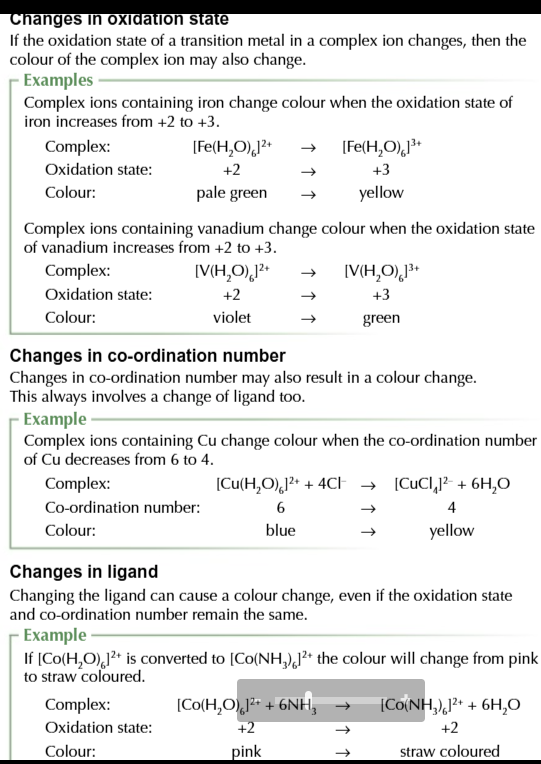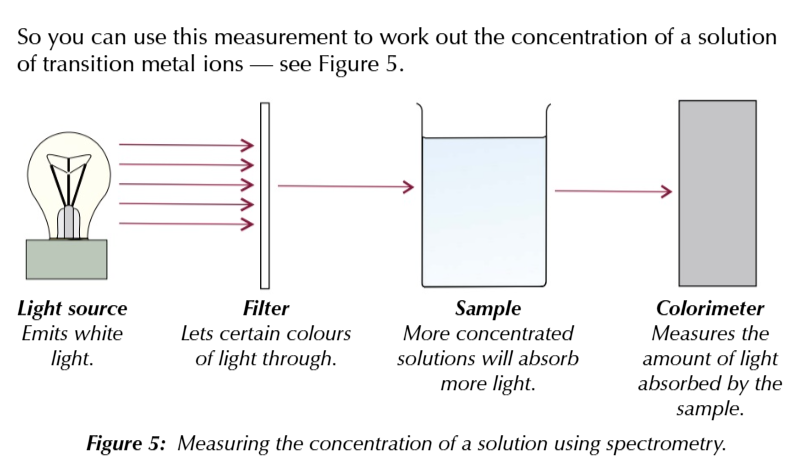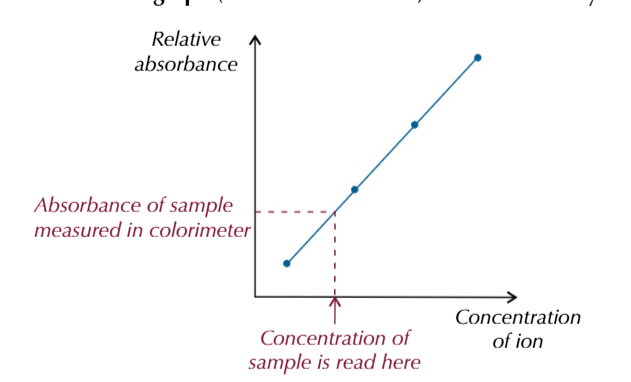4. FORMATION OF COLOURED IONS
1/19
There's no tags or description
Looks like no tags are added yet.
Name | Mastery | Learn | Test | Matching | Spaced |
|---|
No study sessions yet.
20 Terms

normally the 3d orbitals of transition metal ions have the same energy
but when ligands bond to the ions, some orbitals are given more energy than others
splitting the 3d orbital into different energy levels
electrons tend to occupy the lower orbitals
ground state

to jump to the higher orbitals (excited states)
electrons need energy equal to the energy gap △E which is gotten from visible light

the energy absorbed when electrons jump up can be worked out
△E=hv=hc/λ
△E is the energy absorbed (joules)
h= planks constant (6.63 × 10-34)
v= frequency of light absorbed (hertz)
c= the speed of light (3 × 108 m s-1)
λ= wavelength of light absorbed (m)
the amount of energy needed to make electrons jump depends on:
central metal ion
metal ion’s oxidation state
the ligands
the coordination number
when visible light hits transition metal ions
frequencies are absorbed as electrons jump up to higher orbitals
the frequency absorbed depends on
the size of the energy gap
the rest of the frequencies is reflected
reflected frequencies combine to make the complement of the colour of the absorbed frequencies
this is the colour we see

if there are no 3d electrons or the 3d subshell is full
no electrons will jump so no energy will be absorbed
if there’s no energy absorbed
the compound will look white or colourless because all the light will be reflected


spectroscopy
can be used to determine the concentration of a solution by measuring how much light it absorbs
white light is shone through a filter
this filter is chosen to only let the colour of the light through that is absorbed by the sample
the light then passes through the sample to a colorimeter
this shows how much light was absorbed by the sample,

more concentrated solutions
absorb more light

before finding the unknown concentration of a sample
you must produce a calibration graph
